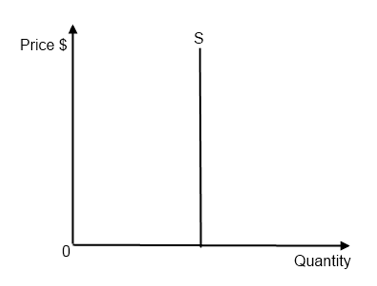Price elasticity of supply (PES)
Price elasticity of supply and its determinants
Price elasticity of supply: measures the responsiveness of quantity supplied to a change in price along a given supply curve.
- The value will always be positive
Price elastic supply (less than infinity).

Figure 2.6 - Price elastic supply
Price inelastic supply (greater than zero).

Figure 2.7 - Price inelastic supply
Unit elastic of supply
- Mathematically, any straight-line supply curve passing through the origin is unit elastic of supply.

Figure 2.8 - Unit elastic supply
Perfectly elastic supply, only supplied at a certain price level.

Figure 2.9 - Perectly elastic supply
Perfectly inelastic supply, supply is constant at any price level.

Figure 2.10 - Perfectly inelastic supply
Determinants of PES:
- Time period considered: longer the time period considered → the more elastic (time to increase the factors of production, such as capital)
- Mobility of factors of production: higher the mobility of factors of production → the more elastic (easier to change to another production with less costs when price rises)
- Unused capacity: if more capacity → productive resources not being fully used → the more elastic (increase output easily without great costs)
- Ability to store stocks: if able to store high level of stocks → the more elastic (able to react to price increases with swift supply increases)
Applications of price elasticity of supply
Commodities: are raw materials in the primary production. (i.e. cotton & coffee)
- Inelastic PED, PES, & YED.
- Higher degree of necessity, takes time to grow/harvest to increase Qs, few or no substitutes
Manufactured products & service → relatively high (elastic) PED, PES, YED.
